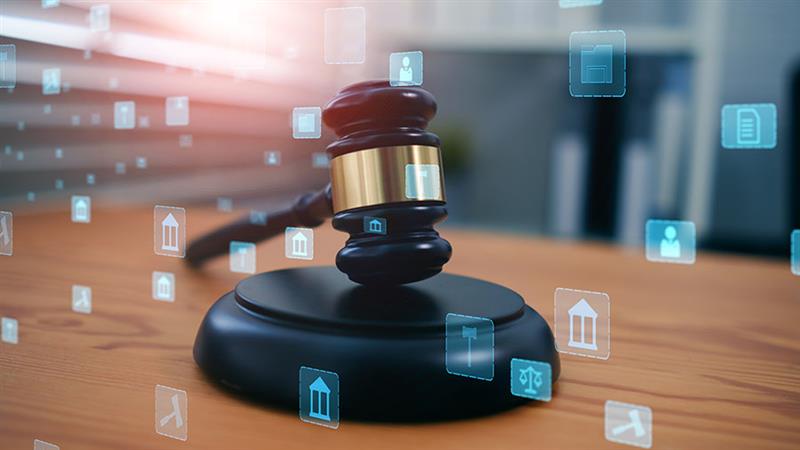Economy & Trade
US-China Relations in the Trump 2.0 Era: A Timeline
12/19/2025Trump has threatened an additional 100% tariff on Chinese goods in retaliation for the expansion of rare earth export controls. This timeline was created on January 21, 2025, and was last updated on October 11, 2025.
Beyond Zero Tariffs – What Hainan’s New Customs Zone Means for Industry, Investors, and the Island
12/18/2025Effective December 18, 2025, the new Hainan customs zone introduces a two-line tariff system to boost processing and trade activities. It offers duty-free benefits for imports used within the island and incentives for value-added industries.
China's Luxury Market Outlook: Stabilization, Strategic Reset, and the New Consumer Landscape
12/16/2025China's luxury market is entering 2026 in a phase of cautious stabilization, shaped by shifting consumer demographics, evolving tastes, and a more complex macro-policy environment.
CEWC 2025: China Emphasizes Boosting Domestic Consumption, Proactive Fiscal Policy in 2026
12/13/2025China’s 2025 Central Economic Work Conference sets a cautious yet targeted economic agenda for 2026, emphasizing proactive fiscal policy, modest monetary easing, and efforts to boost domestic consumption and strategic investment.
From Renewable Electrolysis to FCVs – Opportunities in China’s Emerging Hydrogen Industry
12/09/2025Bolstered by strong government backing, the nascent industry poses exciting opportunities for green applications, but investors must be aware of intrinsic early mover risks.
Shanghai Eastern Hub: Visa-Free Entry for Global Business Travelers Up to 30 Days
12/01/2025The Shanghai Eastern Hub offers a new level of convenience for international business engagement, innovation, and specialized services. With its unique policy mix, it provides foreign enterprises with new opportunities for expansion.
-
11/28/2025
China Outbound Direct Investment (ODI) Tracker
China Briefing -
11/27/2025
Choosing the Right Distribution Model for China Market Entry
China Briefing -
11/27/2025
Breaking Down the US-China Trade Tariffs: What's in Effect Now?
China Briefing -
11/26/2025
China’s FDI in 2025: What the First 10 Months Reveal
China Briefing -
11/26/2025
EU-China Relations After the 2024 European Elections: A Timeline
China Briefing
Tax & Accounting
China Passed VAT Law Implementation Regulations: A Snapshot for FIEs
12/22/2025China Draft VAT Implementation Regulations will reshape tax certainty for foreign-invested enterprises, streamlining compliance, cash flow, and cross-border trade planning.
Tax Risks of Using Personal Vehicles for Business Purposes and Compliant Solutions
12/19/2025Using personal vehicles for business purposes can create hidden tax risks for both employees and companies. This article explores why these risks arise and offers two compliant solutions.
Frequently Asked Questions in VAT Management in China
12/12/2025This China VAT Q&A addresses practical compliance issues, from invoice issuance to input tax credits. These answers help businesses navigate VAT rules confidently.
Annual Compliance Requirements for Foreign NGOs in China
12/11/2025Foreign NGOs in China must follow a strict annual compliance process involving activity plans, work reports, and inspections. Learn the key steps, risks, and strategies to ensure smooth compliance.
Annual Filing of Stamp Tax on Business Account Books before January 15: FAQs
12/10/2025China taxpayers must complete stamp tax declaration and payment by January 15 if there has been an increase in tax items, such as "paid-in capital" and "capital reserve," in the 2025 business account books.
China Monthly Tax Brief: November 2025
12/05/2025Recent measures issued by national and local authorities reflect a clear policy direction: tightening compliance standards while enhancing service transparency and clarifying long-standing procedural ambiguities.
-
12/02/2025
Unlocking China's New VAT Law: Key Changes, Business Impacts, and Compliance Tips
China Briefing -
11/25/2025
Building and Maintaining Tax Health in China: A Complete Guide for Foreign Companies
China Briefing -
11/21/2025
Understanding India’s Tax System – How It Differs from China
China Briefing -
11/18/2025
Guide to Accounting and Audit in China 2026 – New Publication Out
China Briefing -
11/18/2025
China Manufacturing Tracker 2025
China Briefing
Legal & Regulatory
Annual Compliance Requirements for Foreign NGOs in China
12/11/2025Foreign NGOs in China must follow a strict annual compliance process involving activity plans, work reports, and inspections. Learn the key steps, risks, and strategies to ensure smooth compliance.
Company Law Draft Judicial Interpretation Part III: Nominee Shareholding, Investor Rights Protection, and Equity Transfer
12/03/2025The draft judicial interpretation reshapes rules on nominee shareholders and investor rights, and outlines new guidance on enforcement and equity transfers.
China's NMPA Issues Comprehensive Guidelines to Reform Cosmetics Regulation
12/02/2025China’s newly released cosmetics guidelines create a more innovative, transparent, and globally aligned regulatory environment. Early compliance will give companies a clear competitive edge in the world’s largest beauty market.
Choosing the Right Distribution Model for China Market Entry
11/27/2025Choosing the right route to market requires aligning distribution, compliance, and operational needs with your business goals in China.
China’s Cross-Border Data Transfer: Key Insights from Official Q&A (III)
11/24/2025The latest official Q&A on cross-border data transfer clarifies rules balancing security and business needs. Foreign investors must adopt proactive compliance strategies to avoid risks.
Selling Agricultural Products to China: Tighter Traceability and Compliance Rules from December 15
11/17/2025China’s GAC Announcement No. 219 introduces stricter declaration and management rules for agricultural imports. Exporters must meet new compliance standards to maintain market access.
-
11/13/2025
Double Wage Rules in China: Key Updates Under Judicial Interpretation II on Labor Disputes
China Briefing -
11/12/2025
Company Law Draft Judicial Interpretation Part II: Shareholder Capital Contribution Obligations
China Briefing -
11/10/2025
How Will China’s Rare Earth Export Controls Impact Industries and Businesses?
China Briefing -
11/05/2025
China Briefing
-
11/03/2025
Company Law Draft Judicial Interpretation Part I: General Provisions
China Briefing
Industries
How Companies Can Leverage the 30% Added Value Rule in Hainan
12/18/2025Starting December 18, 2025, Hainan's 30 percent added value rule enables duty-free transfers to mainland China for goods processed in Hainan. This policy creates new options for cost reduction and supply chain optimization.
From Renewable Electrolysis to FCVs – Opportunities in China’s Emerging Hydrogen Industry
12/09/2025Bolstered by strong government backing, the nascent industry poses exciting opportunities for green applications, but investors must be aware of intrinsic early mover risks.
China Manufacturing Tracker 2025
11/18/2025Our tracker provides continuous updates on key economic and growth indicators in China’s manufacturing industry. The data for October 2025 has now been updated.
Navigating Trends and Opportunities in China’s Tourism Market
11/14/2025China’s tourism sector is shifting toward a more regulated, experience-driven, and sustainability-oriented model as policymakers modernize the market and travel demand continues to rebound.
China’s Cosmetics and Personal Care Market: Key Trends and Business Outlook
11/04/2025China is now the world's second-largest cosmetics and personal care market and leads regional growth in Asia. We delve into the key drivers building up China’s beauty and personal care sector and the business scope for foreign brands.
Understanding China’s Longevity Market: Industry Segments, Trends and Opportunities
10/21/2025China’s longevity market is emerging as a powerful new growth frontier as the country enters a rapidly aging demographic era. Driven by national-level policy support since 2024, China is shifting from reactive elderly care to proactive, lifespan-oriented innovation across healthcare, biotech, and smart eldercare.
-
10/02/2025
China Moves Toward Absolute Emissions Cap in Carbon Trading System
China Briefing -
10/01/2025
China Tech Cities on the Rise: AI and VC Opportunities for Global Investors
China Briefing -
09/29/2025
Key Regulatory Developments in China’s F&B Sector: Implications for Industry Stakeholders
China Briefing -
09/15/2025
Can China’s Sports and Fitness Industry Drive New Consumption?
China Briefing -
09/02/2025
China’s Biopharma Industry Clusters: Mapping Opportunities and Regional Strengths
China Briefing
HR & Payroll
Performance Appraisals in China: How Employers Can Legally Link It to Pay
12/10/2025Employers in China face growing scrutiny over performance appraisal systems tied to pay. Standardizing procedures and ensuring transparency can help mitigate legal risks and maintain compliance.
Nine Provinces Roll Out Updated Minimum Wage Standards from December 1
12/08/2025This article offers a guide to minimum wages in the Chinese Mainland and discuss how labor costs are affected by changes to the minimum wage levels. The data is current as of December 8, 2025.
Non-fixed-Term Labor Contract in China: Rules Further Clarified Under Judicial Interpretation II
12/04/2025Non-fixed-term labor contracts provide employees with significant protection under China’s Labor Contract Law. Employers must understand the triggers and compliance requirements to avoid costly disputes.
Shanghai’s Overseas Qualification Recognition List: What Foreign Professionals Need to Know
11/20/2025Shanghai’s latest revision of its foreigner qualification recognition list further streamlines procedures for overseas professionals and employers to access local talent policies.
Double Wage Rules in China: Key Updates Under Judicial Interpretation II on Labor Disputes
11/13/2025Judicial Interpretation II refines double wage rules in China, clarifying liability and calculation standards. Employers can now follow clear guidelines to avoid disputes.
China Further Expands the 240-Hour Visa-Free Transit Policy to 65 Ports
11/05/2025Effective June 12, 2025, nationals of Indonesia shall be eligible for China's 240-hour visa-free transit policy, bringing the list of eligible countries to 55.
-
11/04/2025
China Releases Official 2026 Public Holiday Schedule
China Briefing -
11/04/2025
China's Visa-Free Policies: Latest Updates
China Briefing -
10/30/2025
Foreigners Working in China: SPC Clarifies Employment Relationship Standards
China Briefing -
10/07/2025
China Port Visa Explained: Who Needs it and How it Compares to Visa-Free Entry
China Briefing -
10/03/2025
China’s Demographic Trends by Province and City: An Investor’s Analysis
China Briefing
Technology
The Best Oil and Gas Software Solutions for 2026
12/01/2025The oil and gas industry is shifting to AI, predictive analytics, cloud computing, IoT sensors, and robotics to reduce downtime, optimize wells, and improve safety.
EU-China Relations After the 2024 European Elections: A Timeline
11/26/2025Timeline tracking key developments affecting EU-China relations, including trade and business engagement, under the new European Parliament.
China’s Cross-Border Data Transfer: Key Insights from Official Q&A (III)
11/24/2025The latest official Q&A on cross-border data transfer clarifies rules balancing security and business needs. Foreign investors must adopt proactive compliance strategies to avoid risks.
Empowering Data Compliance Through Technology: Building Scalable Governance in China
11/07/2025Data compliance in China requires more than policy – it demands operational capability supported by technology. Digital tools help enterprises reduce risk and achieve resilient governance.
Revisions to China’s Cybersecurity Law: Strengthened Oversight and Alignment with Emerging Technologies
11/05/2025The new amendment to - in effect January 1 - includes new AI provisions, higher penalties, and closer alignment with China’s broader data and security regulatory framework.
China Releases Certification Measures for Cross-Border Data Transfers – The Last Piece of the Regulatory Puzzle
10/24/2025China’s certification pathway for cross-border personal information transfers is now finalized. Businesses should prepare by tracking regulatory updates and building internal compliance systems.
-
10/16/2025
Data Compliance in China: A Roadmap for Foreign Investors – New Publication Out
China Briefing -
10/08/2025
The “Negative Lists” Easing Data Export in China’s FTZs - A Complete Guide for Foreign Companies
China Briefing -
09/25/2025
China Briefing
-
09/11/2025
New Guidelines on Handling Sensitive Personal Data in China in Effect November 1
China Briefing -
08/27/2025
Understanding China’s AI + Manufacturing Roadmap: Implications for FIEs
China Briefing
 Our firm Dezan Shira & Associates provides legal, tax and operational advisory across Asia.
Our firm Dezan Shira & Associates provides legal, tax and operational advisory across Asia. 


































